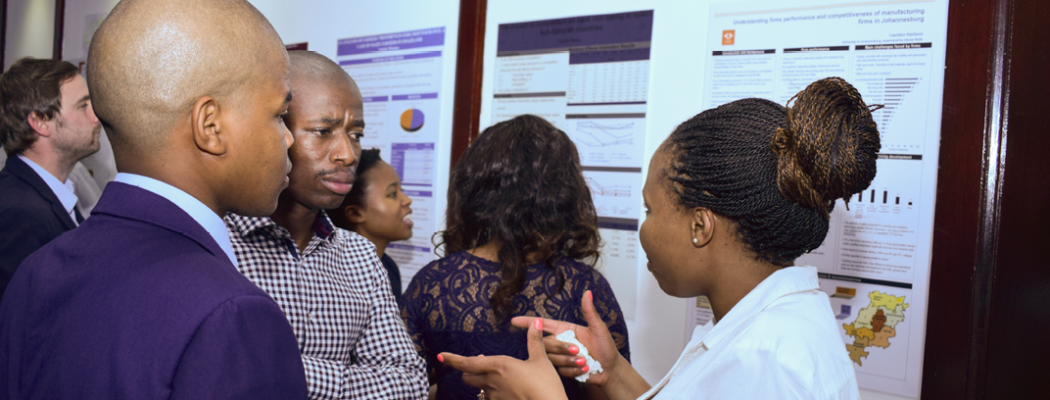Least-cost power pathway for South Africa
South Africa’s coal resource has historically provided a source of abundant and cheap energy for South Africa and currently supplies most of its primary energy. Given its aging coal power plant fleet, and international commitments to reduce greenhouse gas emissions, there are increasing pressures for South Africa to embark on a transition to clean energy. South Africa’s abundant solar and wind energy, combined with recent and projected reductions in the cost of renewable technology, offer the country an opportunity to transition away from coal without compromising other development objectives. As in many places with good renewable resources, it is now the least-cost option for new build, and government policy, to support the least-cost pathway.
Given South Africa’s large endowment of renewable resources and well-matched demand profile, and decreasing technology costs of wind, solar and battery storage, investment in new renewable power plants is the least-cost option for South Africa
Wind and solar plants have the added advantage of having relatively short lead-times, which means they could help alleviate supply shortages the country is currently facing due to the lower than expected reliability of the existing coal power plants
Artificially constraining the inclusion of solar PV and wind in the long term will increase the electricity price and negatively affect economic development
An aging coal-based system
South Africa’s coal-based energy system is aging, whilst electricity supply is unable to meet current demand. As a result, the country experiences frequent load shedding, which negatively affects economic growth. Load shedding during the winter months of the Covid-19 pandemic placed an additional burden on households. There is a need to build new capacity to meet current and future electricity demand without compromising economic development.
72% of South Africa’s existing energy capacity and 81% of the electricity it generates is coal-based. As a result, the power sector is the largest contributor to emissions in South Africa. Adhering to its nationally determined contributions (NDCs), South Africa has committed to keeping emissions stable from 2025-2030, followed by a period of decline to between 212-428Mt CO2e by 2050.
 Declining costs of solar PV and wind
Declining costs of solar PV and wind
Global developments in renewable technologies have resulted in dramatic declines in the costs of solar PV and wind relative to others. Between 2010 and 2017, the levelized costs of electricity from solar PV and wind decreased by 81% and 62%, respectively. These declines have extended to South Africa, where the cost of solar PV and wind have decreased by 83% and 59% through the Renewable Energy Independent Power Producer Procurement Program (REIPPPP) process.
These cost declines are projected to continue. Conservative projections estimate the cost of solar PV and wind to further decline by 35% and 18%, respectively, by 2050. Optimistically, these declines could be larger, at 58% and 37%, respectively.
Due to its historical abundance of cheap coal, South Africa’s power system is still heavily reliant on coal. At the same time, the cost of coal is expected to increase, while demand is expected to decrease.
What does this mean for South Africa’s clean energy future?
Constraining the inclusion of renewable energy technologies raises the cost of generation and lowers decarbonization of the power sector. Results of modelling efforts indicate that forcefully constraining the inclusion of solar PV and wind negatively affects real GDP and employment, whilst not achieving substantial emission declines in the power sector.
An imposed constraint on renewable energy, coupled with a requirement for South Africa to meet its NDCs, would require the use of more expensive technologies, such as nuclear. Yet nuclear technologies are no longer economically competitive with renewable technologies and would require higher capital investments than solar PV and wind.
 Meeting the systems integration challenge
Meeting the systems integration challenge
Concerns regarding the use of variable energy resources arise when integrating weather-dependent generators that are non-dispatchable to the power system at large volumes. Gains in systems integration, to accommodate variable renewable energy (VRE) supplies on a system-wide basis, have been substantial. VRE technologies are also modular, allowing for the expansion of total systems capacity in response to growth in demand within months rather than years.
Moreover, ongoing declines in the costs of energy storage are expanding the range of viable options for meeting the systems integration challenge. Over the longer term, advancing knowledge of system performance, technological advances in the techno-economics of storage, and institutional reforms warrant increased optimism that power systems based predominantly on VRE will offer reliable, resilient, and affordable solutions.
Endowments in renewable energy
Power generation capacity needs to be increased to replace existing – primarily coal – capacity, which are old and failing
To ensure the availability of affordable and clean energy, South Africa needs to ensure that it optimizes the cost of new power generation
Government policy should be based on the least-cost energy development plan for South Africa, without placing any artificial constraints to the technology choices considered
Developing countries are frequently well endowed with naturally distributed renewable energy sources. They often lack significant legacy energy systems, however, and are likely to experience rapid increases in energy demand.
For these reasons, many developing countries have an opportunity to leapfrog directly to advanced energy technologies. South Africa is a prime candidate for exploitation of VRE due to high quality endowments in solar and wind. Government policies should encourage VRE as a key supplier of energy that integrates into a comprehensive strategy for inclusive, sustainable economic development.





